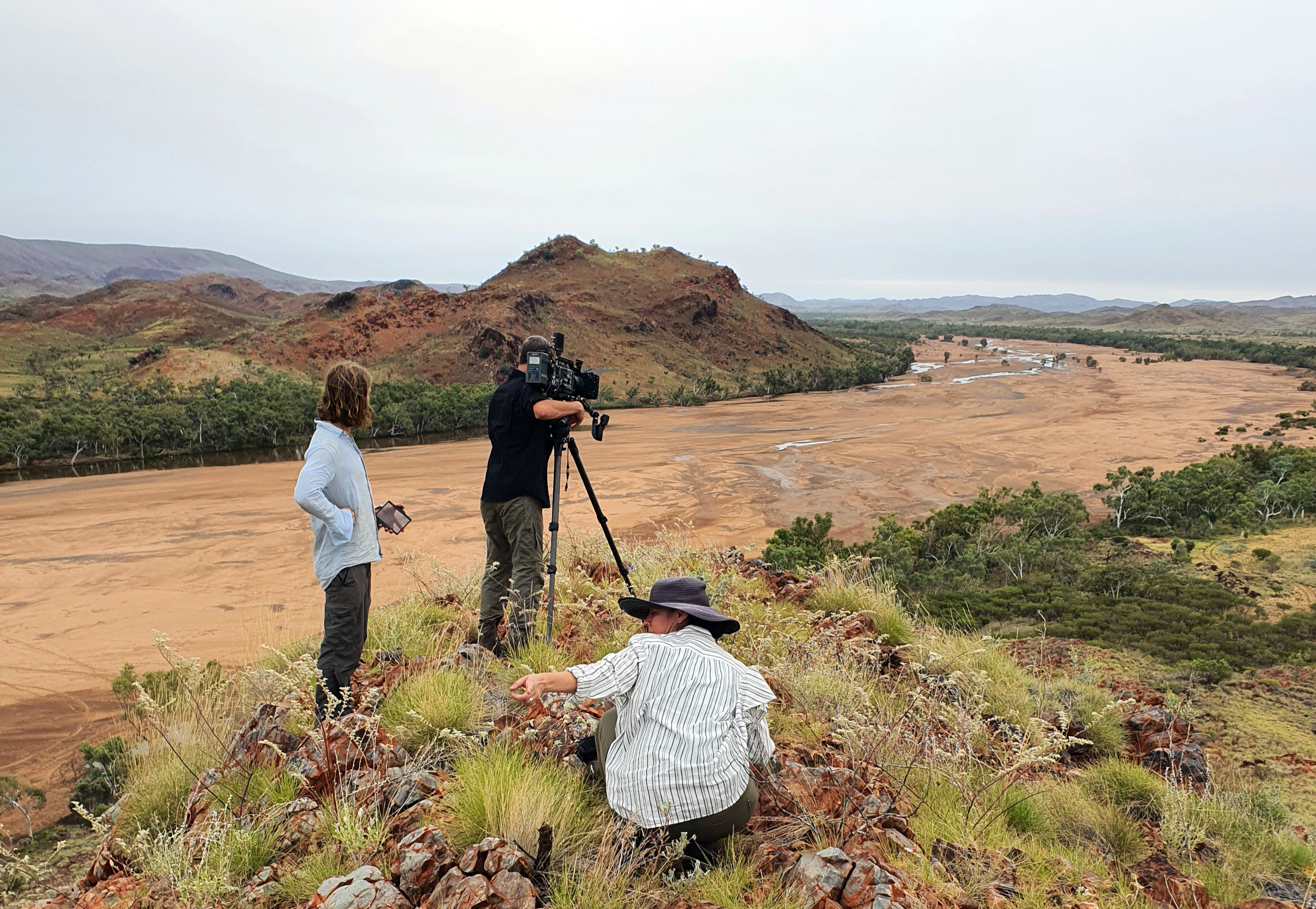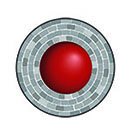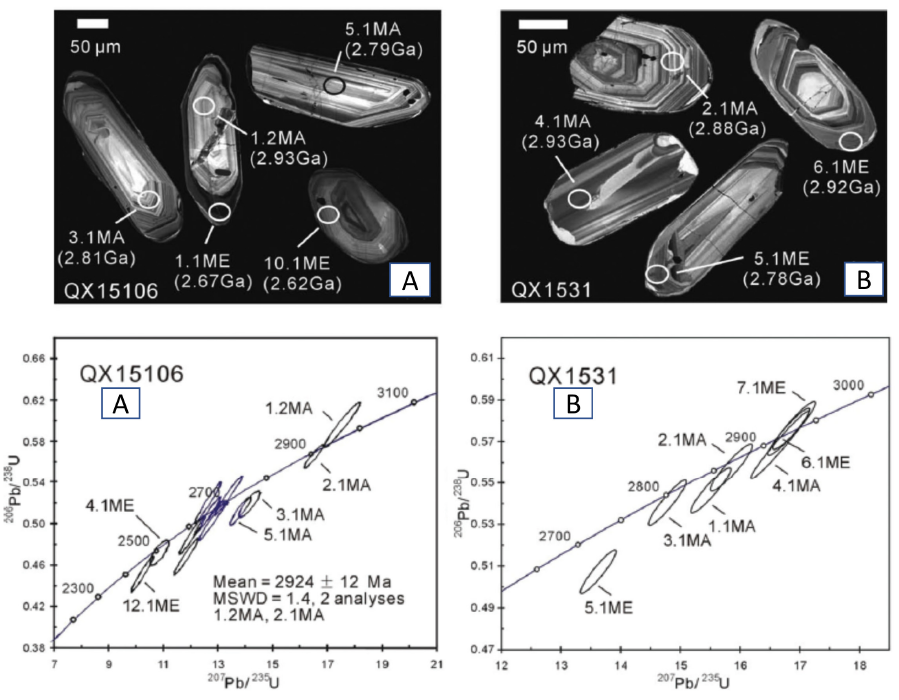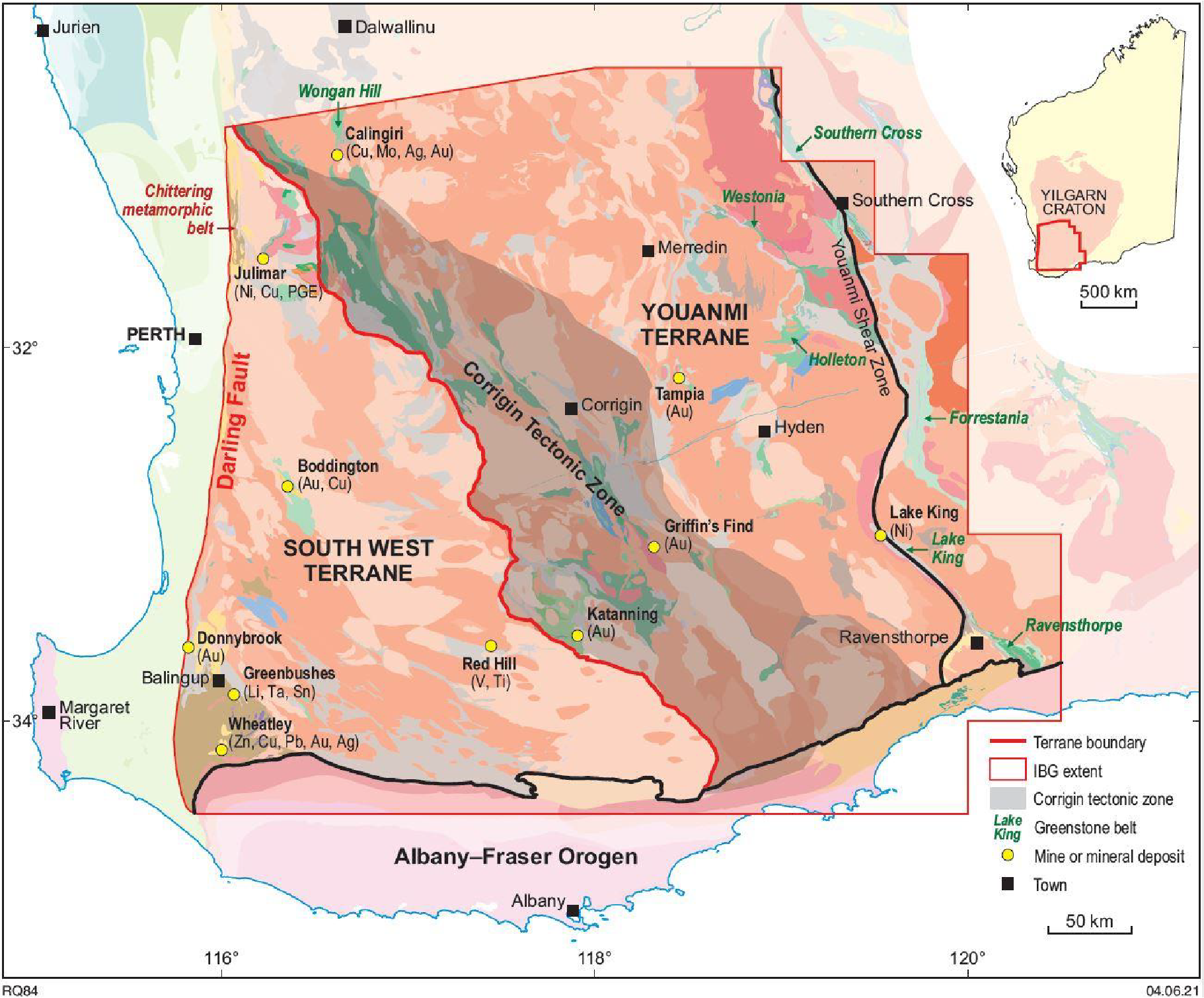Flagship Programs
Following the new conceptual framework outlined here, these Research Highlights are identified as contributing to understanding Earth Architecture (the roadmap for fluids) and/or Fluid Fluxes (the “traffic report”), with logos for easy attribution.


1. DEEP-EARTH FLUIDS IN COLLISION ZONES AND CRATONIC ROOTS (TARDIS II)
Themes 1, 2 and 3, Early Earth, Earth's Evolution and Earth Today, contributing to understanding Earth's Architecture and Fluid Fluxes.
AIMS
This program investigates the role of fluids in the deep mantle and lithosphere, using studies of kimberlites and other volcanic rocks, xenoliths of mantle and crustal rocks in volcanic rocks, ophiolites, and UHP terrains related to subduction zones. Super-reducing, ultra-high-pressure (SuR-UHP: 400-600 km) mineral assemblages in some ophiolites carry implications for the evolution of fluid compositions, reactions and redox states in subduction environments from the surface to the Transition Zone, and suggest a new geodynamic collision process that may improve mineral exploration concepts for paleosubduction regimes. The recent discovery of similar ultra-reduced mineral assemblages in ejecta from Cretaceous volcanoes in Israel suggests a previously unrecognised process of interaction between highly reducing deep-mantle fluids and ascending basaltic magmas. We aim to produce an experimentally testable model for the generation of such fluid conditions in the mantle, to quantify constraints on the geochemical and tectonic processes that have produced SuR-UHP assemblages, and to produce a geodynamic model for these processes.
2021 REPORT
Most of the work on the kimberlites and related rocks and the North China Craton was focused on finalising these projects to the stage envisaged and forecast by the end of 2021 after a successful year of completing and publishing a significant amount of the work undertaken. This included writing up the remaining results and concepts for publication in high-ranked journals. A milestone for CCFS Vision was achieved in 2021 with the acceptance of a benchmark paper for Nature Geoscience, “Thermochemical structure and evolution of cratonic lithosphere in Central and South Africa”, with 7 CCFS co-authors (Juan Carlos Afonso as first author). This paper demonstrates the power of the LitMod technology developed at CCFS and provides remarkable new insights into the evolution of the African lithospheric mantle and its response to tectonic forces over time.
Ultra-reduced magmatic assemblages, Mt Carmel, Israel: Work continues on this topic as the project has expanded to include 3D Xray micro-tomography imaging in collaboration with Dr Jeremy Shaw (UWA) to understand volumetric and spatial relationships of the relevant phases in aggregates of corundum crystals, whose growth history was analysed earlier by Oliveira et al. (CCFS publication #1533, Fig. 1). Another new development was a collaboration with Dr Chi Ma (CalTech, USA), a specialist in micromineralogy who is using a combination of microchemistry and microstructural analysis (EBSD) to characterise tiny grains of minerals in the corundum aggregates. He has discovered a range of new minerals, of which 4 have been submitted to the International Mineralogical Association for approval.
Tethyan Belt: Work continued on the magmatic and structural evolution of the Tethyan Belt in Iran, continuing a very successful synthesis of the development of the northern edge of Gondwana, the detachment of a series of microcontinents, and their amalgamation to the European continent. A new strand of work in Tibet started in 2021 focussing on understanding the origin of previously collected samples in the Kangjinla region and implications for the tectonic history. This is a collaboration with CCFS PhD student Hongkun Dai (graduated 2021), former CCFS PhD student Qing Xiong and other colleagues from CCFS, Macquarie and China University of Geosciences, Wuhan (China). The first manuscript is in advanced stages of preparation for Nature Communications.
An invited major review paper, “Hf-Nd isotopes in the mantle: a global review and new geodynamic perspectives” by CCFS researchers Romain Tilhac, Bill Griffin, Sue O’Reilly and Graham Begg has been submitted to Chemical Geology. This is a major contribution with a strong focus on the geodynamic processes that control the broad correlations, and some striking deviations from correlation, between Nd and Hf isotopes in the mantle globally.
A new phase of the TARDIS Project will continue in 2022, funded by ARC DP grant DP210102196, titled “The link between cratonic roots, redox state, and mantle geodynamic.” Chief investigator Craig O’Neill withdrew from the project, and Dr Olivier Alard, a specialist in mantle redox has been added as a Chief Investigator. This project aims to understand the role of Earth‘s redox state on the geodynamic evolution of continental cratonic roots. Cratonic roots form strong, buoyant rafts upon which Australia‘s oldest crust and mineral deposits survived. Cratons preserve a record of planetary-scale chemical shifts, including the rise of surface oxygen, but it is unclear how these redox shifts themselves affected lithospheric processes. This project integrates new developments in geochemistry, geophysics, and geodynamics, to map the geochemical state and structure of cratonic roots, aiding mineral exploration, and also shedding light on the processes that modify, mineralise, and sometimes destroy cratonic roots.
Continuing support from Minerals Targeting International will fund a new aspect of the ongoing GLAM (Global Lithospheric Architecture Mapping) project “Archean mantle and plate tectonics: the seismic record of arc magmatism”.
A collaboration between colleagues from the University of Sydney and CCFS researchers resulted in the award of ARC DP220100709 funding for 2022 for the project “Mapping mineral systems of deep Australia” aimed at enabling mineral resource discoveries by calibrating geophysical surveys against geochemical and petrophysical properties measured on mantle samples brought to the surface by recent volcanoes. National geophysical surveys deliver images of geophysical gradients in the deeper part of the Australian continent. The interpretation of these gradients in geological terms and in terms of economic mineral systems is the key to unlock deep exploration success. This project will turn Australia’s investment in National geophysical surveys into new discoveries of base metals and other essential resources. More benefit stems from enabling the transition to a clean economy, which requires a much broader range of critical minerals and a larger quantity of base metals.

Figure 1: The distribution of corundum crystallised during the different stages of growth, in a crystal aggregate cut roughly subparallel to the C axes of the corundum. Aggregate is 2 mm long. From: Oliveira, B., Griffin, W.L., Gain, S.E.M., Saunders, M., Shaw, J., Toledo, V., Afonso, J.C. and O’Reilly, S.Y. 2021. Ti3+ in corundum: Tracing crystal growth in a highly reduced magma. Scientific Reports, 11, 2439.
Published outputs for 2021
CCFS publications: #1519a, 1528, 1530, 1532, 1533, 1539, 1540, 1541, 1543, 1544, 1545, 1548 1561, 1565, 1569, 1568, 1578, 1613, 1614, 1658, 1659, 1660, 1663, 1665, 1668, 1669, 1670, 1674, 1677, 1680, 1683, 1694, 1696, 1703

2. GENESIS, TRANSFER AND FOCUS OF FLUIDS AND METALS
Themes 2 and 3, Earth’s Evolution and Earth Today, contributing to understanding Earth’s Fluid Fluxes.
AIMS
This program embodies a holistic approach to ore deposit research, acknowledging that the genesis of mineral occurrences requires the conjunction in time and space of three main independent parameters: fertility, lithosphere-scale architecture, and favourable transient geodynamics. In this context, the integrated studies in this Flagship program address the critical link between metal source fertility and four-dimensional evolution of multi-scale fluid pathways that ensure efficient mass and fluid flux transfer between the mantle and the upper crust. Our studies test the hypothesis that the genesis of sizeable mineral deposits is the end product of self-organised critical systems operating from the scale of the planet all the way to the very focused environments where ore deposits can form. This Flagship Program is not commodity-focused but rather looks at the basic commonalities among various mineral systems to unravel the main constraints in the formation of ore systems.2021 REPORT
Work in 2021 was carried out within the framework of a number of ongoing PhD projects, mainly funded by ARC or industry, and the work of ECRs at UWA. The main focus was sampling and analysis for the key industry-funded projects that started in 2020. Strategic partnerships with overseas and national institutions were significantly strengthened, with engagement of Master students in other countries who carried out sampling at specific locations. An example is the involvement of Masters students from the University of Bologna (Italy), who worked in the framework of ARC LP190100785 and will be graduating in mid 2022. A new strategic two-year project on the role of carbon in the transport of metals in collaboration with the University of Leicester and Macquarie University was funded by BHP at the end of 2021. This project builds on the results from CCFS Flagship Program 2 over the past decade and embodies the legacy of significant research excellence that was generated.
Published outputs for 2021
CCFS publications: #1540, 1555, 1576, 1667 .

3. MODELLING FLUID AND MELT FLOW IN MANTLE AND CRUST
Themes 2 and 3, Earth’s Evolution and Earth Today, contributing to understanding Earth’s Architecture and Fluid Fluxes.
AIMS
Many aspects of Earth Science, from ore deposits to giant earthquakes, depend critically on the complex interaction of solids and fluids. Numerical simulation of these processes and effective visualisations of the results is critical to understanding how these Earth system components work, but our ability to do this is currently very limited. Flagship Program 3 is developing the next generation of numerical codes and aims to refine the thermodynamic parameters involved by integrating high- pressure experiments to handle these complex problems. This will lead to important improvements in the quantification and visualisation of Earth processes, and will be applied to a variety of geodynamic situations.
The new high-pressure experimental group at Macquarie joins this initiative to provide input on physico-chemical parameters of minerals, melts and fluids in the deep mantle, the composition of melts that infiltrate the lithosphere, and their effects on its geodynamics and stability.

Stephen Foley and Chunfei Chen loading an experiment into the Walker cell of the multi-anvil apparatus (Photo: Morris McLennan).
2021 REPORT
Work continued in 2021 towards developing the next generation of tools for Earth Science simulations - in particular, novel techniques to model the interaction of fluid flow with solid geodynamic process from the crust to lithosphere, and deeper mantle.
The Australian Laureate project “Deep Earth Cycles of Carbon, Water and Nitrogen” continued into its third year. Current experimental projects include reaction experiments between crustal rocks and mantle in subduction zones (Chutian Shu, Chunfei Chen), the extension of partial melting experiments on peridotites with CO2 and H2O (Isra Ezad), investigations of the role of grain size on melt mobility (Michael Förster and Juan Carlos Afonso), processes during the subduction of carbonate-rich materials (Chunfei Chen pictured), melting of sulphur-bearing pyroxenites as possible sources of Cu-porphyries and shoshonites (Anthony Lanati, Isra Ezad), the occurrence of salts in subducting slabs (Chunfei Chen, Michael Förster), halogen partitioning between hydrous minerals and melts (Isra Ezad and Matthew Phillips), and the partitioning of nitrogen between hydrous minerals, fluids and melts (Michael Förster). Chutian is also investigating melting of hydrous pyroxenites in the mantle wedge above subducting plates and assessing which melts could be produced from them. New HDR students who have arrived in January 2022 after having commenced overseas due to COVID-19-related travel restrictions are Matt Phillips (solubility of trace elements in fluids), Patrick Manselle (role of amphibole in convergent margin magmatism) and Lesego Ramokgaba (unusual metasomatic effects in the the Kaapvaal cratonic lithosphere). The latter two are collaborations with the Universities of Illinois and Cape Town, where the students were hosted to commence their projects.
Published outputs for 2021
CCFS publications: #1375, 1533, 1549, 1555, 1571, 1578, 1613, 1621, 1622, 1656, 1657, 1662, 1664, 1675, 1676, 1695.

4. ATMOSPHERIC, ENVIRONMENTAL AND BIOLOGICAL EVOLUTION
Theme 1 Early Earth, contributing to understanding Earth’s Architecture and Fluid Fluxes.AIMS
We investigate how the evolution of life and ore deposits were linked to the changing whole-Earth system, focusing on planetary driving forces that affected all the different shells of the planet, to develop a 4-dimensional conceptual framework of Earth evolution. Given the broadly comparable petrological evolution of Earth and Mars, we also aim to put forward new working hypotheses on how life and mineral systems may have formed and evolved on the red planet and are involved in NASA’s Mars2020 landing site selection process. This program tests the hypothesis that the evolution of life and the genesis of sizeable mineral deposits are the end products of systems operating at the scale of the planet all the way down to the specific environments where life flourished and mineral deposits formed. A component of the program focuses on Mars to investigate whether the evolution of life and the genesis of mineral systems on the red planet operated in a broadly similar fashion. We evaluate the relative importance of: (1) the threshold barriers that form in specific environments, creating strong chemical and energy gradients in the crust, and the self-organised behaviour of mineral systems and life; (2) the evolving nature of ’traps’ at the lithosphere-hydrosphere boundary, where life and ore deposits developed through time; (3) the global-scale cycles of key elements and heat transfer essential for the evolution of life and formation of ore deposits and 4) the 4-D evolution of the pathways that connect different geochemical reservoirs through time, linked to the changing tectonic style of the planet, as a guide to understanding biological and ore deposit evolution through time.2021 REPORT
Work in 2021 has been carried out within the framework of a number of ongoing PhD projects and post-doctoral research programs mainly funded by the ARC. Post-doc Dr Stefano Caruso completed his study at UNSW of the source and composition of fluids associated with hydrothermal alteration of the 3.48 Ga Dresser Formation (Pilbara Craton), while both Brendan Nomchong and Georgia Soares successfully submitted and defended their PhD theses on the development of more complex life forms as preserved in the 2.4 Ga Turee Creek microbialite reef complex of Western Australia. Georgia obtained a post-doctoral position at Penn State University in the US, as did graduated UNSW PhD student Dr Erica Barlow on a prestigious NASA Astrobiology post-doctoral fellowship. Bonnie Teece (UNSW, co-supervised by Dr Simon George) submitted her PhD thesis “Organic geochemical signatures of complex life forms from the GoE of Australia” at the very end of the year and will graduate in 2022.
Prof Van Kranendonk will continue his work on the Dresser Formation and begin his collaboration with Prof Tony Kemp (UWA) on the environmental conditions of early Earth from isotope tracers, although fieldwork for that project was hampered by Covid. However, fieldwork was undertaken during a window of opportunity in May, when Prof Van Kranendonk and honours student Alec Byrne collected samples of possible gypsum crystals in the Pilbara Craton (3.35 Ga) and the Hamersley Province (2.56 Ga), during periods of low atmospheric oxygen when sulfate crystals should not be present. During this trip, Masters of philosophy student Clare Fletcher accompanied Prof Van Kranendonk to assess the ancient stromatolite sites of the Pilbara for her thesis that focusses on how to conserve these internationally significant sites and to participate in the filming of a Canada-Australia-French co-production documentary by Wildbear productions titled “Carbon: the Unauthorised biography” due in theatres worldwide in March 2022 (see photo below). On this trip, we also had the enormous privilege of meeting Njamal elders Mr Jamie Haynes and his brother Eginbah to discuss ways to partner in conservation of the ancient Pilbara fossils and share deep time scientific and cultural stories of this amazing landscape.
Due to Covid, 2021 was a year with limited international travel but lots of time for writing, resulting in several significant publications. The third issue on hot spring research was published in the Journal of Astrobiology (v. 21, No. 1), which was edited by Prof Van Kranendonk and includes three papers from his group (papers by Djokic et al. #1382, Murphy et al. #1726, and Van Kranendonk et al. #1486). In addition, three papers by Allen Nutman et al. on the Eoarchean of West Greenland provide greater detail on the environments of some of the earliest crust on Earth and the biogenicity of stromatolites found at Isua (CCFS publications #1727, 1728, 1732). There was also a major chapter published in the Elsevier book “Mars Geological Enigmas” (#1731), which summarises the settings of early life found in the Pilbara and their analogues on Mars, and a paper by Rouillard et al. (#1729) re-examined the setting of the (in)famous putative Apex chert microfossils in 3.46 Ga rocks of the Pilbara, previously the oldest accepted evidence of life on Earth but now the subject of much uncertainty.

Filming in the Pilbara on the banks of the Shaw River for the documentary "Carbon: An unauthorised biography" by Wildbear Productions due for international release in March 2022.
Published outputs for 2021
CCFS publications: #1382, 1486, 1534, 1592, 1725, 1726, 1727, 1728, 1729, 1730, 1731, 1732

5. AUSTRALIA’S PROTEROZOIC RECORD IN A GLOBAL CONTEXT
Themes 2 and 3, Earth’s Evolution and Earth Today, contributing to understanding Earth’s Architecture.
AIMS
Earth’s history is considered to have been dominated by cycles of supercontinent formation and breakup. This program tests this hypothesis and its relevance to Australia’s geological evolution, assessing Australia’s positions during the supercontinent cycles by examining the paleomagnetic, petrological and detrital provenance record of the Australian and adjacent continents.
By studying primarily Australian rocks and comparing the results with global analogues, we aim to extend our knowledge about supercontinent cycles and the evolution of the Australian continent to the Paleoproterozoic or even further back in time. Such knowledge is fundamental for understanding the first-order fluid cycles that controlled the formation and redistribution of Earth resources, and the establishment of a 4D global geodynamic model covered in other Flagship Programs.
2021 REPORT
This project was completed in 2020.
CCFS publications: #1526, 1599, 1608, 1699, 1700, 1704

6. FLUID REGIMES AND THE COMPOSITION OF EARLY EARTH
Themes 1 and 3, Early Earth and Earth Today, contributing to understanding Earth’s Architecture and Fluid Fluxes.
AIMS
Zircon crystals are currently the only material that records events in the first 500 million years of Earth’s history, since no rocks have survived from this period and no other minerals have been established as Hadean in age. There is growing evidence from the study of these zircon crystals that the Earth stabilised rapidly after accretion and that both solid rock and liquid water were present within 150 million years of its formation. This program uses the geochemical signatures of zircon crystals from all known Hadean and early Archean localities, together with geochemistry of the oldest known rocks and the application of geophysical and geochemical modelling, to establish how the first crust formed, why it was destroyed and the role fluids played in this process. The changes that took place throughout the Archean are being evaluated as crustal processes evolved and plate tectonics became the dominant regime. A key component is determining the interaction between the mantle and the evolving crust. In addition, work undertaken on Martian meteorites and lunar samples is providing further constraints on the early history of the Solar System, especially the role played by fluids.
2021 REPORT

Figure 1: Mesoarchean rocks yielding zircons ages of (A) ~2.9 Ga for trondhjemite and (B) ~2.9 Ga for tonalite from the Qixia area of eastern Shandong in the eastern North China Craton (modified from CCFS Publication #1707, Wan et al., 2021).
As in 2020, work in 2021 was severely disrupted by COVID-19. This impacted in many ways, including the cancellation of fieldwork in both Greenland and Labrador. The Australian Antarctic Division research project on legacy samples stored with Geoscience Australia commenced in April following a visit to Canberra to collect the samples. Work continued with Monika Kusiak in Poland on Antarctic material collected earlier from GA and resulted in 2 publications.
Work commenced on samples collected in 2019 from Isua and Nuuk in Greenland. However, new research was mainly focussed on ancient rocks in the Ukrainian Shield with Curtin post-doctoral research fellow Dr Leonid Shumlyanskyy. This resulted in 5 publications in 2021.
Lead nanospheres were discovered in Hadean and Eoarchean zircon at Jack Hills, in association with former CCFS Marie Curie fellow Monika Kusiak from Poland and Dr Richard Wirth from Potsdam, Germany. Delays have meant that the results have yet to be published.
A study of gneisses in the southwest Tarim Craton has identified Mesoarchean rocks as old as 3.2 Ga and further work is in progress with former CCFS post-doctoral fellow, Associate Professor Rongfeng Ge from Nanjing University.
The Lu-Hf investigation of ancient zircon crystals from Aker Peaks in Kemp Land, Antarctica, has now been published in Gondwana Research. Also in Antarctica, new data from the Scott and Raggatt Mountains in the Napier Complex, collected by Piotr Krol (PhD student of Monika Kusiak), identified TTG gneisses with ages of 2.7 Ga and 2.5 Ga, the latter overlapping with the widespread high-grade metamorphic event. It is postulated that the rocks may have formed in separate domains that did not come together until the 2.5 Ga tectonothermal event. The paper is now accepted for publication in Precambrian Research and will come out early in 2022.
Work commenced with Santanu Bhowmik of the IIT at Kharagpur on a suite of metasedimentary samples from the southern margin of the Central Indian Tectonic Zone to test the age of rocks in the Sausar Basin, and on samples from greenstone belts in the Western Dharwar Craton.
Long-time collaboration with the Chinese Academy of Geological Sciences, especially the Beijing SHRIMP Center, continued in the North China Craton with Profs Dunyi Liu and Yusheng Wan and their colleagues, leading to 2 publications in the year (Fig. 1). It also included a geological investigation of the 2022 Winter Olympic sites that will be published in early 2022 in time for the opening of the games.
Lunar work in 2021 included modelling conditions in the lunar magma ocean and the effect of large impact cratering during its consolation (2 papers published). The outcome of the latter study suggested that if a low viscosity layer was present between the crust and mantle during early Lunar history, it would result in impact basins of variable size and nature that would be difficult to identify. Thus, any basins formed early in the history of the Moon might go undetected, obscuring a potentially higher impact flux that has been postulated by several workers. The stand-out research was on the lunar samples collected in December 2020 by the Chinese Chang’e-5 lunar mission. Alex Nemchin and members of the Beijing SHRIMP Center and others investigated the age and composition of lunar basalts from the Oceanus Procellarem region. These are young basalts with an age of 1963±57 Ma. Geochemical modelling indicates a lack of heat-producing elements in the deep mantle where these basalts were generated, meaning that it is unclear what process was involved in their generation. However, the new date provides an important step in correlating magmatic activity with the cratering record of the Moon; previously unconstrained between 3 and 1 billion years ago.
Published outputs for 2021
CCFS publications: #1705, 1706, 1707, 1708, 1709, 1710, 1711, 1712, 1713, 1714, 1715, 1716, 1717, 1718, 1719, 1720, 1721

7. PRECAMBRIAN ARCHITECTURE AND CRUSTAL EVOLUTION IN WA
Themes 1, 2 and 3, Early Earth, Earth’s Evolution and Earth Today, contributing to understanding Earth’s Architecture.
AIMS
The enormous size and limited outcrop of the Neoarchean Yilgarn Craton and the Proterozoic orogens around its margins are detrimental to a deep understanding of what controls the distribution of mineral resources and which geodynamic processes were involved in the tectonic assembly of the Australian continent. The principal aim of this program is to combine geological, geochemical and geophysical techniques to propose a 3D structural model of the lithosphere of the Yilgarn Craton and its margins. This aim is predominantly addressed through passive source seismic experiments and integrated analysis of Hf-isotope data.

Simplified pre-Mesozoic interpreted bedrock geology of the southwest Yilgarn Craton. The thick red line shows the location of the redefined terrane boundary between the Youanmi and South West Terranes, the yellow dots show the location of mines and mineral deposits.
2021 REPORT
As a response to the COVID-19 pandemic and as part of the West Australian Government economic recovery plan, the Geological Survey of Western Australia (GSWA) reprioritized its 2020–21 work program and embarked on the Accelerated Geoscience Program (AGP). The focus shifted from field-work intensive acquisition of new data to delivering new state-wide interpretive datasets as well as products for in key regions of the State to accelerate understanding of the region's geology and mineral prospectivity. State-wide data products released in 2021 as a result of the AGP include major crustal boundaries (2D and 3D), critical minerals and Nd, Hf and O isotope maps. Regional products include the Southwest and Far-Eastern Yilgarn Craton, for which a large number of new digital layer and related data have been released. One of the most significant outputs has been a new interpreted bedrock geology map out the south-western part of the Yilgarn Craton, including a modification of terrane boundaries (Fig. 1). All AGP data products are described in an extended abstract volume (Accelerated Geoscience Program extended abstracts, GSWA Record 2021/4) that can be obtained through GSWA’s eBookshop. Further activities related to the Yilgarn Craton were the publication of a journal article on seismic hazard and reactivation (CCFS publication #1661) and a presentation of a digital poster by Gessner et al. on the Yilgarn’s cryptic basement structures at the 2021 Australian Earth Science Convention.
Published outputs for 2021
CCFS publications: #1661, 1672, 1673, 1682
WHOLE OF CENTRE TECHNOLOGY DEVELOPMENT

1. CAMECA ION MICROPROBE DEVELOPMENT: MAXIMISING QUALITY AND EFFICIENCY OF CCFS ACTIVITIES WITHIN THE UWA ION PROBE FACILITY
Themes 1, 2 and 3, Early Earth, Earth’s Evolution and Earth Today, contributing to understanding Earth’s Architecture and Fluid Fluxes.
AIMS
The Ion Probe Facility within the CMCA at UWA is one of the best-equipped Secondary Ion Mass Spectrometry (SIMS) labs in the world. It houses a CAMECA IMS 1280 large-radius ion microprobe, for the high-precision analysis of stable isotopes in minerals, and two CAMECA NanoSIMS 50s for imaging mass spectrometry at the sub-micron scale. This program provides a dedicated Research Associate to facilitate CCFS activities and lead the development of standards and analytical protocols at the CMCA. This greatly benefits CCFS by increasing the capacity of the Facility, enabling a higher degree of interaction and participation on research projects, facilitating standards and protocols development, and allowing greater synergy with other CCFS node facilities.

2. FRONTIERS IN INTEGRATED LASER-SAMPLED TRACE ELEMENT AND ISOTOPIC GEOANALYSIS
Themes 1, 2 and 3, Early Earth, Earth’s Evolution and Earth Today, contributing to understanding Earth’s Architecture and Fluid Fluxes.
AIMS
The overall aim is to develop new analytical methods for in situ measurement of trace elements and isotope ratios to support and enable CCFS research programs and to provide new directions of research. Specific objectives include:
• Implementation of a new Pb isotope column chemistry protocol
• Laser Ablation Trace Element Imaging with Aerosol Rapid Introduction System (ARIS) and (Teledyne CETAC Excite 193nm laser with ARIS and HDIP +)
• Ultra trace elements by LA-H-ICPMS
• In situ Rb-Sr geochronology, analytical technique and application field
• In situ Rb-Sr in Glauconite, dating and fingerprinting sediment diagenesis
• Pushing in situ Rb-Sr geochronology: going younger than 20 Ma. (Teledyne CETAC G2 193nm laser - Agilent 8900QQQ ICP-MS/MS)
• Characterisation and development of reference materials for in situ Rb-Sr dating using tandem LA-ICP-MS (Teledyne CETAC G2 193nm laser + Agilent 8900QQQ ICP-MS/MS)
• In situ Halogens quantification by tandem ICP-MS
• In situ sulfur isotope determination in sulfides using tandem LA-ICP-MS
• In situ low level chalcogenids tandem ICP-MS
• In situ split-stream measurement of trace elements and Re-Os isotopes in sulfides using LA-MC-ICPMS and Daly detectors (Teledyne CETAC G2 193nm laser + Nu Instrument Plasma II MC-ICP-MS)
• In situ strontium isotopes in phosphate/carbonate/silicate by LA-fs-MC-ICPMS (Teledyne CETAC femtosecond 198nm laser + Nu Instrument Plasma II MC-ICP-MS)
• In situ Zirconium Isotopes

 ARC Centre of Excellence for Core to Crust Fluid Systems
ARC Centre of Excellence for Core to Crust Fluid Systems